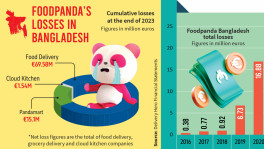Why some SMEs die prematurely
A closer look at the leading causes of SME failure and what the government can do to help

Premature death of SMEs is an important area that remains largely ignored in SME studies and deliberations. A closer look into the area with an inquisitive eye to highlight the reasons for premature failures of SMEs with pragmatic solutions will be fruitful in many ways, especially during the ongoing Covid-19 era.
Fundera - a source of business loans in the USA, using US data from the Bureau of Labour Statistics' Business Employment Dynamics - claims that "20% of small businesses fail in their first year, 30% fail by their second year, and 50% of SMEs fail (within their first) five years in business".
The primary factor underlying this high rate of small business failure is that most SMEs are "very small" and often do not possess the necessary skills, training and experiences in creative business development. Examples available from the ADBI study (2016) on market failures facing SMEs substantiate this view quoting that 99.3% of enterprises in Thailand are small and only 0.5% are medium-sized.
In Japan, a surprising 87% of all enterprises employ not more than five workers (Government of Japan, 2015). Based on this information, Bernard Taich (2021) claims that these statistics are relatively consistent across Asia and the world.
Based on his survey of 1,000 SMEs over 15 years since 2007 in Russia, Africa, Central America, the Middle East, and Asia, he identified five key root causes of business failures and/or sub-optimum business performances.
These include:
a) SMEs prone to premature failure do not identify and understand the customer and proper channels of distribution to the customers;
b) They normally fail to communicate their position of strength to the customers through brief interactions;
c) They suffer from a lack of leadership and expertise, effective motivational capacity, profitable focused and actionable business models, strategies and roadmaps;
d) They visualise only the short-term roadmap, spend unwisely, run out of time, money, enthusiasm and expand prematurely;
e) They have a tepid sense of urgency, rely on magical thinking and religious faith, waiting and hoping as opposed to passionately pursuing success.
These may be a particular type of SME cohort displaying the above shortcomings, but certainly not the SMEs as a whole. Furthermore, there is an external constraint facing the SME universe worldwide. Specifically, the lack of access to institutional financing at an affordable cost is a perennial problem faced by the SMEs.
Government intervention is thus needed to provide relief to the SMEs. A complete and comprehensive support and assistance package needs to be dispensed to reduce SME failure rates. Under the circumstances, the sector can bounce back and resume normal operations with holistic pro-SME policy support.
However, because SMEs are extremely heterogeneous and widely dispersed among rural, semi-urban (pre-urban) and urban locations, two important issues need to be carefully looked into while distributing stimulus packages:
-
regional balance;
-
gender balance.
Moreover, to enable the SME entrepreneurs to come out of the quagmire and resume smooth operation, some additional facilitating steps may be needed:
(i) soft bank loans at concessional interest rates;
(ii) flexible instalment packages;
(iii) VAT exemptions on revenues on current expenses.
Finally, resilience-building measures are very important that would facilitate sustainable operations, aid long-term growth through internal capacity building and enhance long-term competitiveness.

The author is a former Professor and Chairman of the Department of Economics at the University of Dhaka.


 Keep updated, follow The Business Standard's Google news channel
Keep updated, follow The Business Standard's Google news channel
















